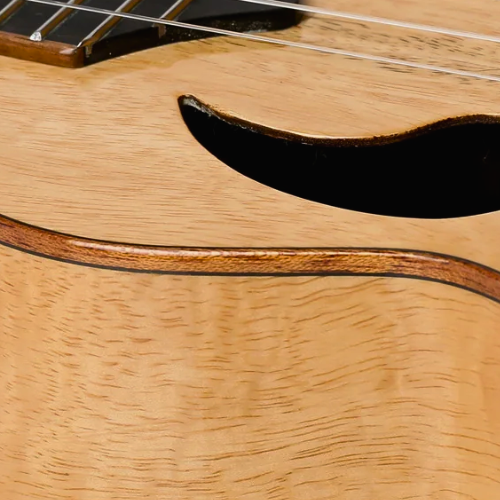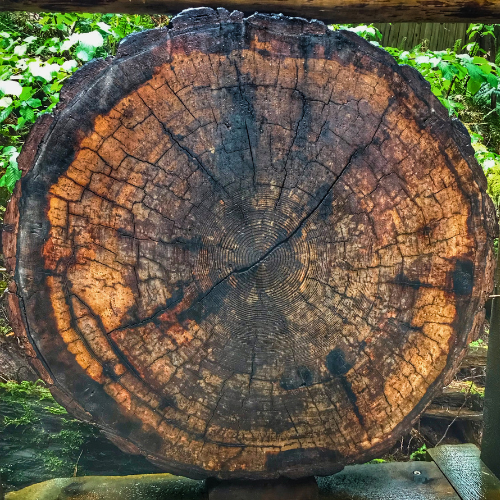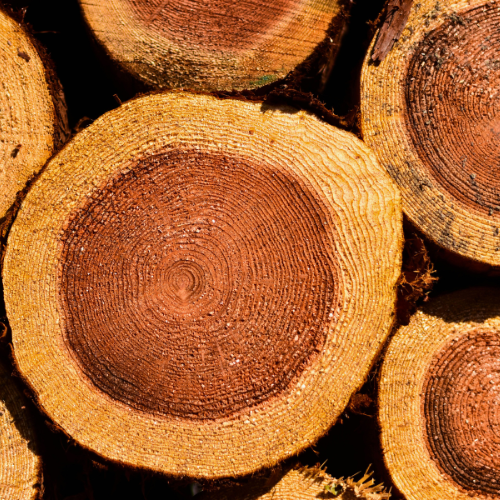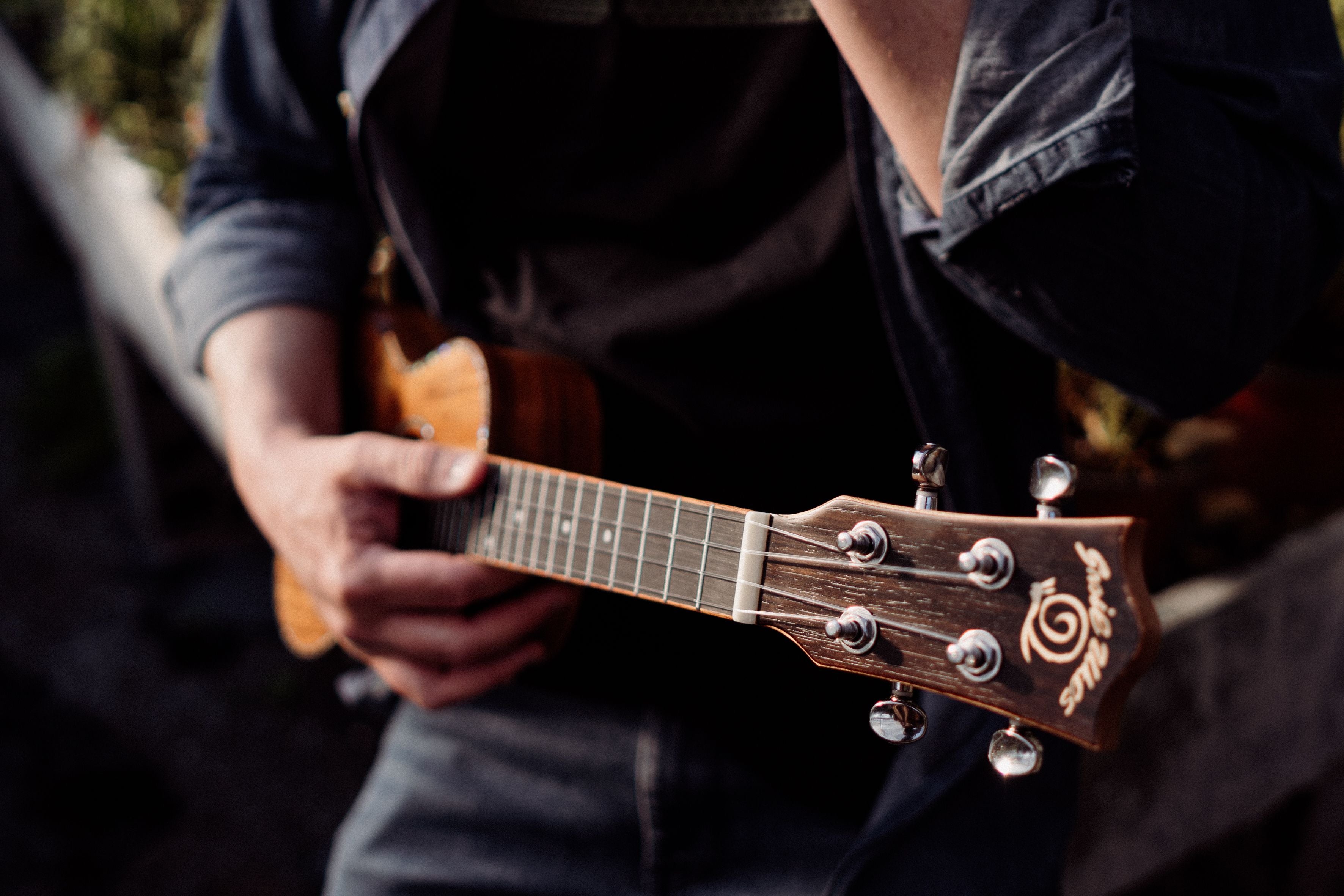While wood choice is central, a ukulele’s voice also depends on:
- Density & Hardness: Harder woods tend to emphasize bass and focus, while softer woods lean toward warmth and airiness.
- Vibration & Resonance: The soundboard (top wood) has the biggest impact, while the back and sides shape resonance and sustain.
- Grain & Stiffness: Even grain and stiffness ensure both strength and optimal vibration.
And of course, don’t forget the body shape, craftsmanship, and strings... all of which interact with the tonewood to create a ukulele’s unique voice.














